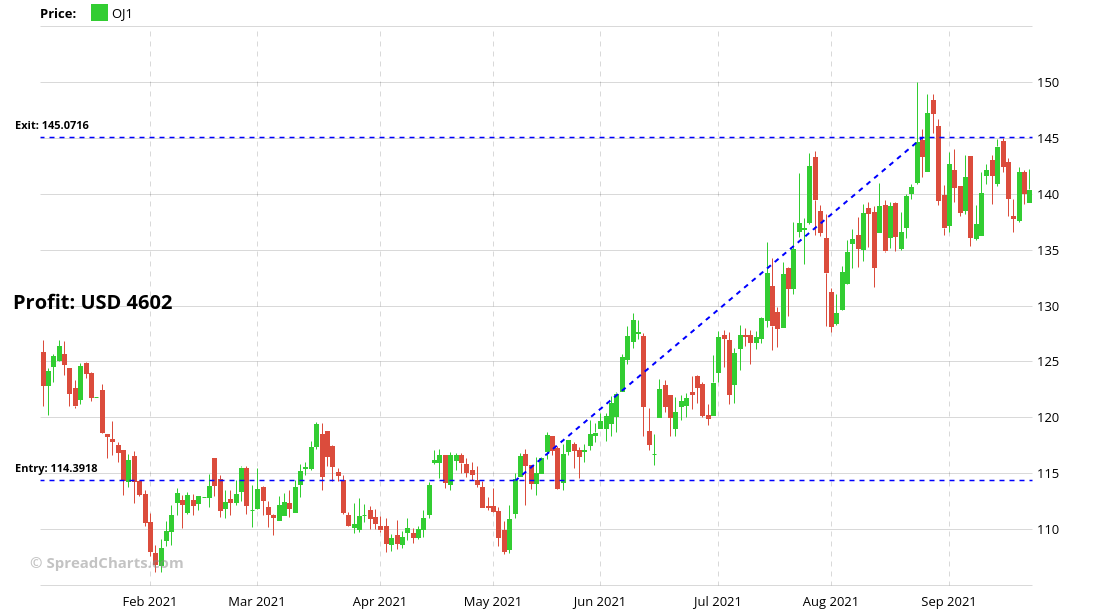(Dis)advantages of the lower liquid markets
Back in May, we alerted our premium users about the opportunity in Orange juice futures. We liked it so much that we even called it a no-brainer!
And it went on an incredible run, rising by 30% in just 4 months.
If you want to learn why we picked specifically orange juice, we’re unlocking the original analysis for everyone to see.
Orange juice (FCOJ) a rather small market compared to other agricultural commodities like grains and other major soft commodities like coffee or sugar. Therefore, it has lower liquidity.
Lower liquidity has several important drawbacks. For example, you can’t really trade interdelivery spreads here. And even the outright futures are not liquid enough for large funds. But it also affects small traders as the lower liquidity means higher risk. There might be some unexpected large moves, sometimes even limit moves in either direction, as the market is less efficient than other larger commodities.
However, every coin has two sides, and markets are no exception. These smaller markets like orange juice tend to be isolated from the macro events to a certain degree. This may be a major advantage. Today’s markets are dominated by the macro and monetary experiments of central banks. This causes most of the markets to move in the same direction. Finding uncorrelated opportunities in such environment is tough. Luckily, there are exceptions, and orange juice can be one of them.
Additionally, due to its small size, this market is unattractive to aggressive players like HFTs and prop trading firms. They simply cannot deploy their (mostly algorithmic) strategies there as the lower liquidity limits their position sizing, and therefore returns. This means no order spoofing, stop hunting, and other malicious intraday activities. The playing field is more leveled, which is beneficial for small traders.
But if I have to pick between a low liquid and a high liquid market, I would always choose higher liquidity. It brings versatility as one is not limited just to the underlying but can use the spreads, option strategies, or ETFs on some commodities. And even the outright futures are tradeable well before the expiration, which is especially important for spread traders as it increases the number of spread combinations they can explore. Good liquidity also lowers trading costs for everyone involved. The bid/ask spreads are tight and slippage minimal in liquid markets.
But there are situations where the lower liquid markets can offer an advantage, such as the orange juice in May.
Check out also these great articles
Did you catch the move in Bitcoin?
Have you made money on this incredible move in Bitcoin? Well, you should have. On...
Read moreInsights from the iron ore market
After explaining why Rubber futures can be a great market for traders, we will focus...
Read moreWhy trade SGX Rubber?
Last time, we introduced the SGX data in the SpreadCharts app and briefly described the...
Read moreIntroducing commodities in Singapore
We are thrilled to announce that we have obtained a license to distribute market data...
Read more